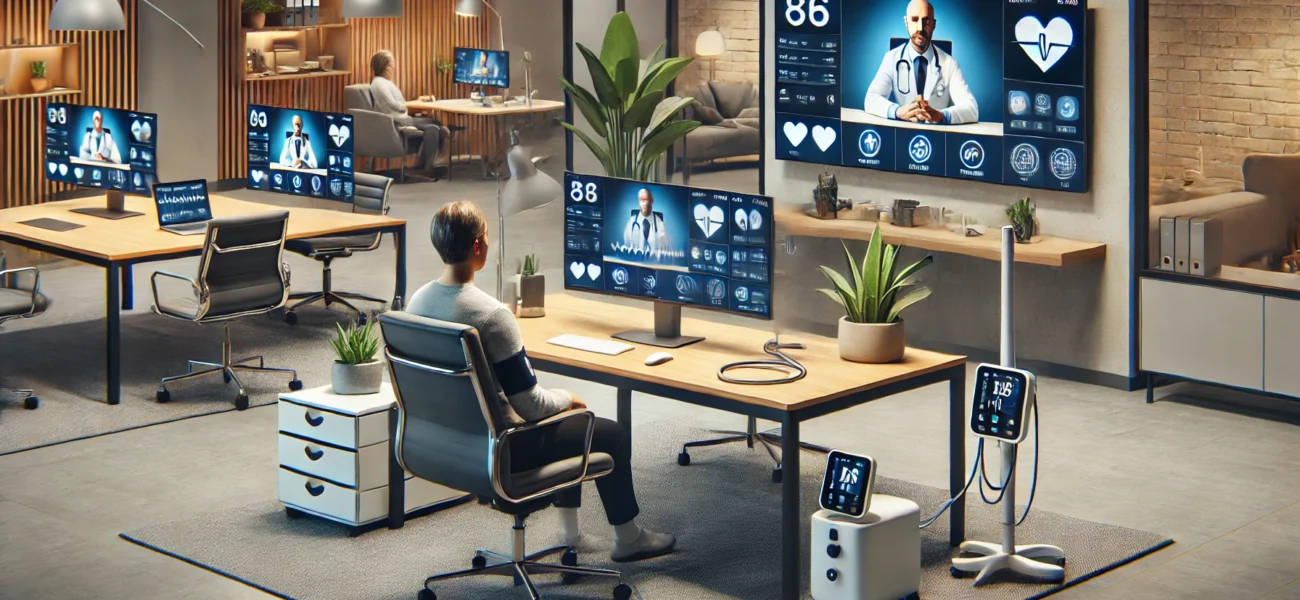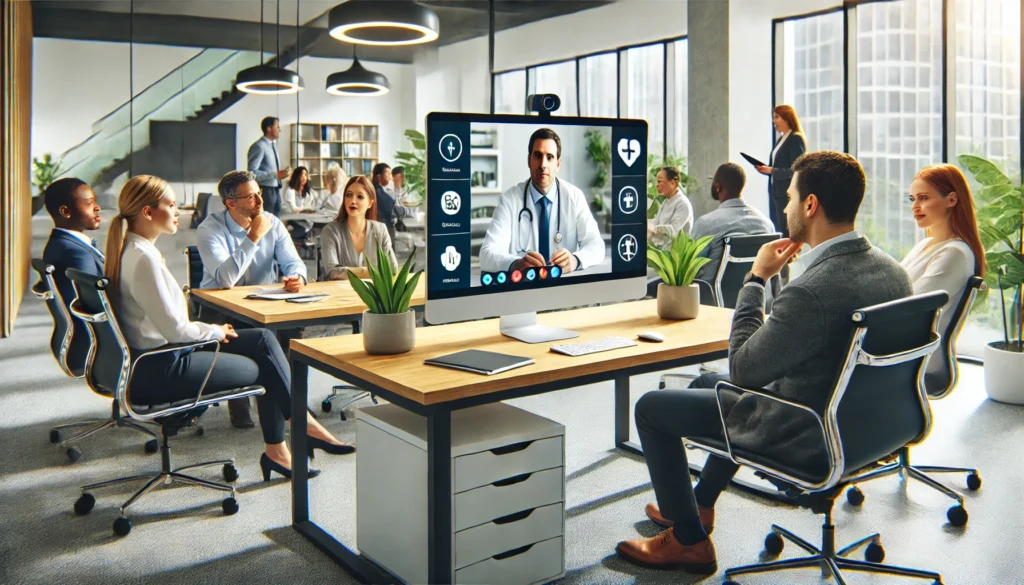
As work environments evolve, there is a growing need to prioritize employee health, not just for those in high-risk roles but for all employees who could benefit from proactive healthcare. Occupational health in the workplace is essential for maintaining a safe, productive, and resilient workforce, but traditional approaches are often reactive and focused on recovery rather than prevention. CAREPOI’s telemedicine solution is stepping in to change this, providing tools that make proactive health support accessible, adaptable, and easy to integrate into any workplace.
Why Occupational Health Matters in Every Workplace
The importance of occupational health extends beyond regulatory compliance or reducing absenteeism; it’s about fostering a culture that values employee well-being. Here are key reasons to emphasize occupational health support:
Risk Mitigation for High-Risk Roles: For industries like construction, manufacturing, and healthcare, employees face physical risks daily. Regular health check-ups, mental health screenings, and ongoing monitoring can reduce injury rates and support early detection of work-related health issues.
Proactive Care for All Employees: For those in less physically demanding roles, the risks are subtler but still significant. Sedentary lifestyles, mental health challenges, and screen-induced eye strain are common in desk-based jobs. Addressing these proactively through health assessments, lifestyle counseling, and stress management support can prevent long-term health issues and keep productivity high.
Reducing Absenteeism and Presenteeism: Health challenges are a primary driver of absenteeism and presenteeism (when employees are physically present but unable to perform effectively due to health issues). Investing in occupational health lowers both by ensuring employees are supported, engaged, and healthier overall.

Proactive Steps for Employers to Implement CAREPOI for Occupational Health
Adopting a telemedicine solution like CAREPOI requires planning, commitment, and a clear strategy. Here are some steps to ensure successful implementation:
Raise Awareness and Encourage Utilization: Launch an awareness campaign to educate employees on how to use the telemedicine platform and the benefits of proactive health care. Encourage leaders and managers to advocate for its use to normalize its presence in the workplace.
Establish Privacy and Trust: Employees may have concerns about privacy and confidentiality. Be transparent about data handling policies, ensure the telemedicine provider follows compliance standards like GDPR, and reassure employees that individual health data will remain private.
Provide Incentives for Participation: Offering incentives like reduced healthcare premiums, wellness days, or reward points for using the telemedicine platform can encourage employees to make use of the service regularly.
Evaluate and Improve Over Time: Continuously evaluate the impact of the telemedicine platform on employee health, productivity, and satisfaction. Gather feedback from employees and use this data to refine health programs and make the platform an increasingly valuable resource.
How CAREPOI’s Telemedicine Solution Supports Occupational Health
With CAREPOI’s telemedicine platform, workplaces can provide their employees with direct access to virtual healthcare, making health support not just accessible but also personal and proactive. Here’s how CAREPOI can transform occupational health management:
1. Easy Access to Health Consultations
Employees can consult with healthcare professionals anytime, without the need for an in-person appointment. For those working in high-risk environments, CAREPOI allows for real-time consultation to address symptoms or injuries quickly. In lower-risk settings, employees can access general healthcare and mental wellness support, helping them stay on top of their health without needing to leave the office.
2. Proactive Health Monitoring and Support
CAREPOI’s platform supports proactive health initiatives, such as regular virtual health check-ups, wellness tracking, and personalized health advice. For example, employees can schedule sessions with wellness coaches or nutritionists through CAREPOI, receiving lifestyle advice and tailored plans for improved health. This approach allows early intervention, reducing the likelihood of chronic conditions and improving overall employee well-being.
3. Mental Health and Stress Management
Mental health is as crucial as physical safety in the workplace, yet it’s often under-addressed. CAREPOI enables employees to reach out to mental health professionals for counseling and support from the privacy of their own devices. This can help employees manage stress, anxiety, and burnout before they escalate into more severe issues, contributing to a healthier and more resilient workforce.
4. Occupational Health Surveillance for High-Risk Roles
For those in high-risk occupations, the platform can provide structured health assessments and ongoing surveillance. CAREPOI can be configured to support health screenings tailored to the risks of specific jobs, such as respiratory health assessments for construction workers or ergonomic assessments for office workers. This is essential for compliance with occupational health regulations and for fostering a culture of safety.
5. Data-Driven Insights for Employers
CAREPOI’s analytics tools provide employers with aggregated data (in compliance with privacy laws) on the overall health trends within their workforce. This insight enables employers to identify common health issues, track the success of wellness initiatives, and implement targeted health programs based on actual needs. For example, if stress levels are consistently high, employers might consider implementing stress management workshops or flexible scheduling options.
The integration of telemedicine solutions like CAREPOI marks a new era for occupational health, where employee well-being is not just supported but actively promoted. Whether for high-risk employees who need specialized health monitoring or for knowledge workers who benefit from proactive health resources, telemedicine is transforming workplaces into healthier, more supportive environments.
By investing in tools that allow employees to take control of their health, employers are building a more resilient workforce and setting a standard that well-being is a priority for all. This not only strengthens the organization’s culture but also supports sustainable productivity, a stronger work environment, and healthier employees.
